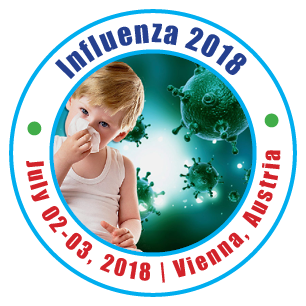
Christopher Chadwick
World Health Organization, Switzerland
Title: Global pandemic influenza vaccine preparedness: progress under the Global Action Plan for Influenza Vaccines and next steps
Biography
Biography: Christopher Chadwick
Abstract
Purpose: The World Health Organization’s Global Action Plan for Influenza Vaccine (GAP) was a 10-year initiative dedicated to reducing the global shortage and inequitable access to influenza vaccines in the event of an influenza pandemic. The overarching goal of the GAP was to develop the capacity to produce enough vaccines to immunize 70% of the global population with two doses of vaccines. The GAP aimed to achieve this goal by increasing evidence based seasonal influenza vaccine use; developing influenza vaccine production and regulatory capacity in 14 low and middle income countries (LMICs) and; encouraging the development of improved influenza vaccines.
Methods: Between 2006 and 2016, the WHO collaborated with member states and key stakeholders to address the global shortage of and increase equitable access to pandemic influenza vaccines in the event of an outbreak.
Results: The outcomes of the GAP include: A dramatic increase in countries with a seasonal influenza policy in place (115 member states by 2014 from a baseline of 74 in 2006); the development of 8 licensed pandemic influenza vaccines and 3 licensed seasonal influenza vaccines in 6 LMICs and; A global expansion of pandemic vaccine production capacity, especially in LMICs (potential global capacity of 6.4 billion doses estimated in 2015).
Discussion: Following the conclusion of the GAP in 2016, priorities for influenza vaccine preparedness moving forward are to sustain the production capacity of influenza manufacturers in LMICs, promote and stimulate innovative influenza vaccine research and development, identify root causes of influenza vaccine hesitancy, generate more evidence on vaccine effectiveness in specific risk groups, and identify innovative ways of addressing global pandemic influenza preparedness.

